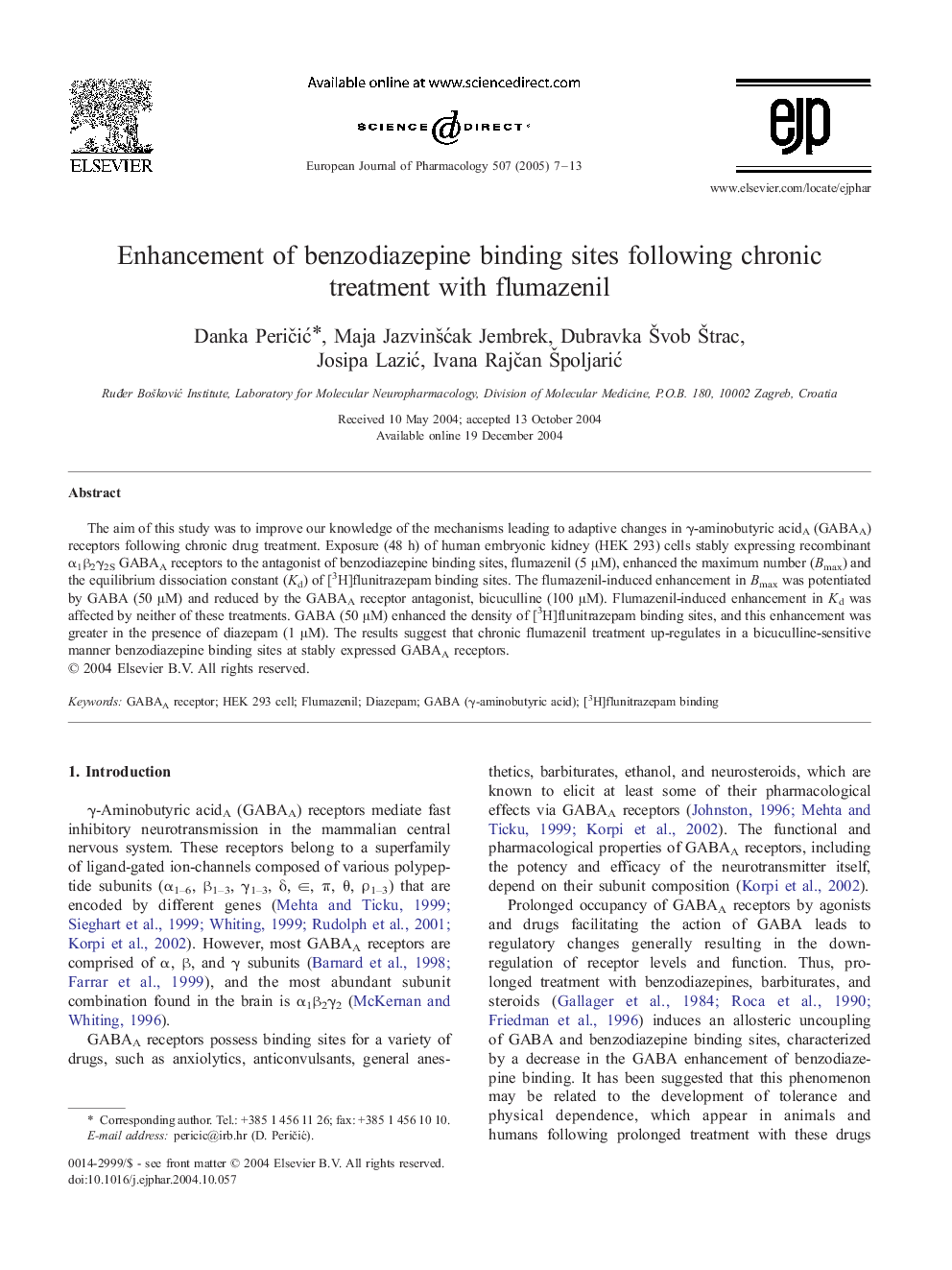| Article ID | Journal | Published Year | Pages | File Type |
|---|---|---|---|---|
| 9921550 | European Journal of Pharmacology | 2005 | 7 Pages |
Abstract
The aim of this study was to improve our knowledge of the mechanisms leading to adaptive changes in γ-aminobutyric acidA (GABAA) receptors following chronic drug treatment. Exposure (48 h) of human embryonic kidney (HEK 293) cells stably expressing recombinant α1β2γ2S GABAA receptors to the antagonist of benzodiazepine binding sites, flumazenil (5 μM), enhanced the maximum number (Bmax) and the equilibrium dissociation constant (Kd) of [3H]flunitrazepam binding sites. The flumazenil-induced enhancement in Bmax was potentiated by GABA (50 μM) and reduced by the GABAA receptor antagonist, bicuculline (100 μM). Flumazenil-induced enhancement in Kd was affected by neither of these treatments. GABA (50 μM) enhanced the density of [3H]flunitrazepam binding sites, and this enhancement was greater in the presence of diazepam (1 μM). The results suggest that chronic flumazenil treatment up-regulates in a bicuculline-sensitive manner benzodiazepine binding sites at stably expressed GABAA receptors.
Keywords
Related Topics
Life Sciences
Neuroscience
Cellular and Molecular Neuroscience
Authors
Danka PeriÄiÄ, Maja JazvinÅ¡Äak Jembrek, Dubravka Å vob Å trac, Josipa LaziÄ, Ivana RajÄan Å poljariÄ,
